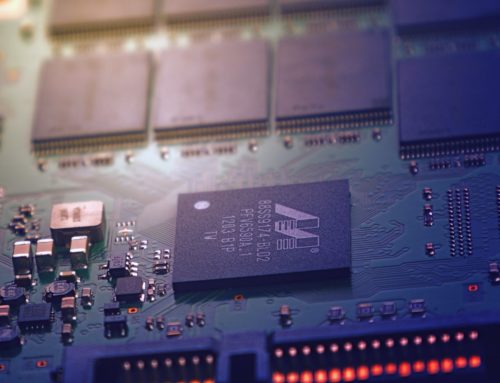The realm of medical technology is perennially evolving, and breakthroughs that were once reserved for the realm of science fiction are progressively becoming a tangible reality. In this astonishing era of innovation, two mind-boggling advancements have superseded our wildest imaginations. Brace yourself, as we unveil the spine-tingling wonders of 3D-printed organs and an extraordinary knife capable of sniffing out tumors. Prepare to embark on an extraordinary journey, where creative engineering prowess intersects with a quest to revolutionize healthcare, forever altering the lives of countless individuals. Within this article, we delve into the realm of these groundbreaking achievements, navigating the murky waters of science-backed creativity while maintaining a neutral and factual stance. So fasten your seatbelts and ready your senses, dear readers, this is just the beginning of what lies ahead in the wondrous world of medical marvels!
Table of Contents
- 1. Unleashing the Future: Revolutionizing Healthcare with 3D-Printed Organs
- 2. The Remarkable Fusion of Technology and Medicine: A World Transformed
- 3. Precision and Innovation: The Cutting-Edge Knife that Detects Tumors by Smell
- 4. Bridging the Gap: How 3D-Printed Organs are Bridging the Organ Shortage Crisis
- 5. Human Ingenuity Redefined: The Promising Potential of 3D-Printed Organs
- 6. Cutting-Edge Precision: A New Era of Cancer Detection through Odor
- 7. Beyond Science Fiction: Realizing the Dream of Custom-Made, Functional Organs
- 8. Charting a Bold Path: Examining the Challenges Enroute to Mainstream Adoption of 3D Bioprinting
- Q&A
1. Unleashing the Future: Revolutionizing Healthcare with 3D-Printed Organs
Advancements in technology have led to groundbreaking innovations in the healthcare industry, and 3D-printed organs are at the forefront of this revolution. This remarkable technology has the potential to transform the way we approach organ transplantation, offering hope to millions of patients worldwide.
3D-printed organs are manufactured using biocompatible materials, such as specialized bioinks, which mimic the properties of human tissues. This allows scientists and medical professionals to create custom-designed organs that are both functional and compatible with the recipient’s body. The process starts with capturing detailed images of the patient’s organ using medical imaging techniques like CT scans or MRI. These scans are then used to create a digital model, which is fed into a 3D printer. Using precise layer-by-layer deposition, the printer creates a 3D structure that closely resembles the patient’s organ.
- Organ shortages: The shortage of organ donors is a critical issue, with many patients dying while waiting for a suitable transplant. 3D-printed organs offer a potential solution to this problem by eliminating the need for donors, as organs can be manufactured on demand, tailored specifically to the recipient.
- Reduced risk of rejection: One of the major challenges of transplantation is the risk of organ rejection. However, 3D-printed organs have the advantage of being created from the patient’s own cells or compatible donor cells. This significantly reduces the risk of rejection, as the bioengineered organ closely resembles the recipient’s tissue.
- Shorter waiting times: Traditional organ transplant waiting lists are often lengthy, forcing patients to endure debilitating health conditions while waiting for suitable organs. With the ability to 3D print organs, waiting times could be dramatically reduced, granting patients faster access to life-saving treatments.
- Lifestyle improvements: The ability to generate organs through 3D printing opens new possibilities for enhancing patients’ quality of life. Organs can be specifically designed to improve functionality, durability, or even incorporate additional features that were previously unimaginable.
As researchers continue to push the boundaries of scientific discovery and technological advancements, 3D-printed organs hold immense promise for the future of healthcare. By revolutionizing organ transplantation, this ground-breaking technology has the potential to save countless lives and provide new hope for patients around the world.
2. The Remarkable Fusion of Technology and Medicine: A World Transformed
In today’s rapidly evolving world, the intersection of technology and medicine has given rise to innovations that were once unimaginable. This remarkable fusion has not only transformed the healthcare industry but also revolutionized the way we perceive and approach medical advancements. The once-distant realm of science fiction is now becoming a reality as cutting-edge technologies seamlessly intertwine with medicine, leading to improvements in diagnosis, treatment, and overall patient care.
One of the most awe-inspiring developments is the utilization of artificial intelligence (AI) in medical diagnosis. AI-powered algorithms can analyze vast amounts of data, enabling healthcare professionals to make accurate and efficient diagnoses. This technology can assist in interpreting medical images, such as X-rays or MRIs, and detect subtle abnormalities that might have otherwise been missed. Moreover, AI algorithms can learn from patterns and continually improve their accuracy, making them invaluable tools for physicians worldwide. The fusion of technology and medicine has opened up new possibilities for optimizing and personalizing treatment plans, ultimately leading to enhanced patient outcomes.
3. Precision and Innovation: The Cutting-Edge Knife that Detects Tumors by Smell
Experience precision and innovation like never before with the latest cutting-edge knife designed to detect tumors by smell. This revolutionary device combines advanced technology with the keen sense of smell to aid in the early detection of cancerous tumors, providing the potential for swift intervention and improved patient outcomes.
Equipped with state-of-the-art sensors, this remarkable knife utilizes artificial intelligence algorithms to analyze the volatile organic compounds emitted by tumors. These compounds, imperceptible to the human nose, are expertly detected by the knife’s ultra-sensitive receptors. Once a tumor is detected, the knife provides real-time feedback through a user-friendly interface, allowing medical professionals to precisely navigate around the tumor during surgical procedures.
With this cutting-edge knife, healthcare providers can benefit from:
- Early Detection: By recognizing the presence of tumors at an early stage, potential complications can be minimized, leading to more successful treatment outcomes.
- Precision Surgery: The knife’s ability to pinpoint tumor locations with remarkable accuracy enables surgeons to perform intricate procedures with enhanced precision, reducing the risk of collateral damage.
- Efficiency and Time-saving: The device’s real-time feedback streamlines surgical workflows, ensuring a faster and more efficient process, ultimately saving valuable time for both medical professionals and patients.
- Enhanced Patient Experience: By facilitating less invasive procedures, patients can benefit from reduced pain, smaller incisions, and faster recovery times.
Leave conventional methods behind and embrace the future of cancer detection with this groundbreaking knife that merges the art of precision and the power of innovation. Its ability to harness the olfactory senses revolutionizes tumor detection, promising a brighter future for cancer patients worldwide.
4. Bridging the Gap: How 3D-Printed Organs are Bridging the Organ Shortage Crisis
3D printing technology has revolutionized various industries, and now it is making groundbreaking advancements in the healthcare sector. One area where it is making a significant impact is in bridging the organ shortage crisis. With the growing demand for organ transplants far surpassing the availability of organs, 3D-printed organs offer a glimmer of hope for millions of patients worldwide.
Here’s how 3D-printed organs are bridging the gap:
- Customizability: Traditional organ transplants often face compatibility issues, as finding a suitable donor is incredibly challenging. However, with 3D printing, organs can be customized to match the patient’s unique requirements, reducing the risk of rejection and increasing the chances of a successful transplant.
- Reduced waiting times: The waiting list for organ transplants can be agonizingly long, with patients anxiously hoping for a matching organ. 3D printing technology has the potential to significantly reduce waiting times by enabling the production of organs on demand, eliminating the need to rely solely on organ donations.
- Ethical considerations: The scarcity of organs often leads to black market activities, where desperate individuals resort to illegal means to obtain organs. By providing an alternative source of organs, 3D printing technology can potentially curb these unethical practices and ensure that patients can receive transplants safely and legally.
5. Human Ingenuity Redefined: The Promising Potential of 3D-Printed Organs
Advancements in medical technology continue to push the boundaries of what is possible, and one area where human ingenuity truly shines is in the realm of 3D-printed organs. In recent years, this groundbreaking innovation has showcased its promising potential to revolutionize the field of organ transplantation. Here, we delve into the remarkable achievements and capabilities of 3D-printed organs that are redefining the future of healthcare:
- Personalized Solutions: 3D printing allows for the creation of custom-made organs tailored specifically to an individual’s unique anatomy, minimizing the risk of rejection and providing better functionality. Gone are the days of waiting endlessly for a matching organ donor. Now, organs can be fabricated using a patient’s own cells, significantly reducing the waiting time and increasing the chances of a successful transplant.
- Complexity Transcended: The intricate nature of human organs poses a manufacturing challenge, but 3D printing has proven to be up to the task. Using advanced techniques and materials, scientists are able to recreate the complex structures found in organs, including blood vessels and tissues, with incredible precision. This opens up new possibilities for transplantation, as organs that were once deemed impossible to replicate can now be manufactured with astonishing accuracy.
The realm of 3D-printed organs is brimming with potential and continues to evolve at an astonishing pace. As scientists and engineers refine this technology, we can anticipate a future where organ transplantation is no longer bound by the limitations of traditional donation methods. The dream of overcoming organ shortages and providing a second chance at life to thousands of patients across the globe is becoming a tangible reality. With each milestone achieved, human ingenuity truly redefines the boundaries of what is possible in the realm of healthcare.
6. Cutting-Edge Precision: A New Era of Cancer Detection through Odor
The field of cancer detection has witnessed a remarkable breakthrough, as cutting-edge precision technology now allows for the detection of cancer through odor. This innovative approach taps into the fascinating connection between cancer and the unique smell it emits, leading to a new era in cancer diagnostics.
Advancements in this field have unearthed a multitude of intriguing findings surrounding cancer odor. Researchers have discovered that certain volatile organic compounds (VOCs) are emitted by cancer cells, creating a distinct scent profile. By leveraging these specific odors, scientists have developed highly sensitive electronic noses capable of detecting even the slightest traces of cancer-related VOCs.
These revolutionary devices have the potential to revolutionize cancer detection, offering several advantages compared to traditional diagnostic methods:
- Non-invasive: The use of odor-based cancer detection eliminates the need for invasive biopsies or uncomfortable imaging procedures.
- Early detection: The precision technology can identify cancers at an early stage when treatment options are typically more effective.
- Cost-effective: Electronic noses provide a cost-effective alternative to traditional cancer detection methods, making it more accessible to a larger population.
- Rapid results: The speed and accuracy of odor-based cancer detection streamline the diagnostic process, minimizing delays in treatment.
As this new era of cancer detection unfolds, the potential impact is immense. The ability to detect cancer through odor not only opens up new avenues for early diagnosis but also paves the way for innovative and less invasive approaches to monitoring and treating cancer patients.
7. Beyond Science Fiction: Realizing the Dream of Custom-Made, Functional Organs
The dream of custom-made, functional organs seemed far-fetched, confined to the realms of science fiction. However, advancements in medical research and technology are bringing this seemingly distant dream closer to reality. With each passing day, scientists are making remarkable strides towards creating organs tailored specifically to individual patients, revolutionizing the field of organ transplantation and providing hope to countless individuals.
1. **Organ Printing:** Using innovative 3D-printing techniques, scientists are on the verge of being able to create custom-made organs by layering cells in a precise manner. By carefully orchestrating the arrangement of different cell types, researchers hope to eventually print fully functional organs such as hearts, livers, and kidneys. This breakthrough would not only eliminate the need for donor organs but also reduce the risk of rejection, since the printed organ would be a perfect match for the recipient’s body.
2. **Bioengineering:** Another avenue of exploration is bioengineering, where scientists manipulate cells to grow organs in a laboratory setting. By coaxing stem cells to develop into specific types of cells, researchers have successfully grown tissues and even simple organs like bladders. With continued progress, more complex organs can be bioengineered, helping those in need of transplants. While there are still hurdles to overcome, such as recreating intricate blood vessel networks, the promise of bioengineered organs offers a glimmer of hope for patients languishing on transplant waiting lists.
8. Charting a Bold Path: Examining the Challenges Enroute to Mainstream Adoption of 3D Bioprinting
The Challenges of Mainstream Adoption of 3D Bioprinting
As the field of 3D bioprinting continues to advance, there are several significant challenges that need to be addressed in order to achieve mainstream adoption. These challenges stem from a wide range of factors including technological limitations, ethical considerations, and regulatory hurdles. By acknowledging and addressing these obstacles head-on, researchers and policymakers can pave the way for the future of this innovative technology.
1. Technological Limitations:
- Biocompatible Materials: One of the major obstacles in bioprinting is the limited availability of biocompatible materials that can be used as “ink” for 3D printers. It is essential to develop materials that mimic the properties of natural tissues in order to create functional and durable printed organs or tissues.
- Precision and Resolution: Achieving high precision and resolution in printing complex structures is another substantial challenge. The current limitations of 3D bioprinting technologies make it difficult to replicate the intricate details and complex geometries found in human organs. Overcoming this hurdle will require advancements in printing techniques and equipment.
- Vascularization: Another critical aspect of bioprinting is the ability to create vascular networks within printed tissues to ensure proper nutrient supply and waste removal. Developing techniques to construct functional blood vessels that integrate seamlessly with the printed tissue is a significant technical challenge that needs to be overcome.
2. Ethical Considerations:
- Bioprinting Ethics: The ability to print human organs and tissues raises intricate ethical questions that need careful consideration. Key issues include the sourcing of cells, ensuring informed consent of tissue donors, and fair distribution of printed organs. Developing ethical guidelines and frameworks will play a crucial role in the responsible and equitable implementation of 3D bioprinting.
- Legal and Regulatory Frameworks: The emerging field of 3D bioprinting presents unique challenges for regulatory bodies. Establishing clear rules and regulations regarding the quality, safety, and efficacy of printed organs and tissues is essential. Striking a balance between encouraging innovation and ensuring patient safety will require collaborative efforts from scientists, regulators, and policymakers.
- Public Perception and Acceptance: The successful adoption of 3D bioprinting also depends on public perception and acceptance of this revolutionary technology. Raising awareness, addressing concerns, and showcasing the potential benefits will be paramount in garnering support and trust from the public.
As we embark on an era of revolutionary advancements in medical science, the prospects of 3D-printed organs and a knife that can ‘smell’ tumors are nothing short of awe-inspiring. The potential to transform healthcare as we know it is within our grasp, as scientists and researchers push the boundaries of innovation to overcome the challenges of disease and organ transplantation.
Through the power of three-dimensional printing, a world where waiting lists for life-saving organs are a thing of the past may be just around the corner. Imagine a reality where patients in need can receive customized, perfectly tailored organs created from their own cells, eliminating the risks of transplant rejection and saving countless lives. The potential for extending lifespans, improving quality of life, and pushing the boundaries of human existence is astounding.
And then, there is the knife that ‘smells’ tumors. Imagine a surgeon, armed with a blade that is not just a tool, but a diagnostic device. This extraordinary advancement enables doctors to detect cancerous tissues with unparalleled accuracy, allowing for more precise and effective surgical intervention. The result? Improved outcomes, reduced invasiveness, and increased chances of successful treatment. This revolutionary technology holds the promise of empowering medical professionals to tackle cancer head-on, one incision at a time.
These innovations are not mere fantasies of a distant future; they are tangible discoveries emerging from the depths of laboratories, propelled by the relentless passion of brilliant minds. The potential impact on human lives is immeasurable and promises to reshape the landscape of medicine forever.
But, despite the tremendous excitement surrounding these breakthroughs, it is important to tread cautiously. As with any technological advancement, ethical considerations, regulations, and safety standards must be carefully navigated. We must ensure that these cutting-edge inventions are accessible to all, prioritizing affordability and equitable distribution.
As we gaze into the horizon of medical possibilities, let us revel in the realm of 3D-printed organs and a knife that ‘smells’ tumors. The future of healthcare has never looked more promising, as science pushes the boundaries of what is possible, inching closer to a world where disease and suffering are conquered. Let us embrace these remarkable innovations and, through collective efforts, work towards a future where healthier and longer lives are within reach for all.




Leave A Comment